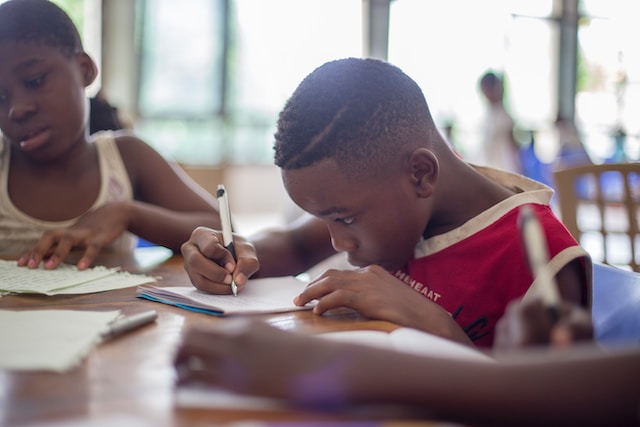Belize provides free education to citizens and permanent residents; non-citizens pay school fees instead.
Churches own and run most schools, with denominational schools accounting for most educational institutions. Churches form formal partnerships with governments whereby operating costs are covered by churches while salaries and supplies are covered by the government.
Belize’s Education System: Structure & Challenges
Belize’s education system is overseen by the Ministry of Education. This department certifies and pays all teachers, directly administering a large percentage of schools; others are run by churches (Catholic, Anglican, and Methodist) or private individuals; there are also specific schools designed for children of ex-pat workers employed in tourism or construction industries in Belize.
Most Belizean students start school when they turn five, entering an infant class before progressing through one of six grades that last one year each. At the end of a grade, students take an exam that determines whether they continue in it or move into secondary education.
Government schools make up the bulk of secondary education in Belize; however, there are also a handful of private ones located where there is a larger ex-pat population, such as in San Pedro on Ambergris Caye or Belize City. Many private schools offer an International Baccalaureate Diploma that is recognized worldwide as an entry point to higher education.
Though schooling in Belize is generally sufficient, some challenges remain. One key problem is that many poor parents do not prioritize school education for their children and consequently drop them out prior to finishing primary school. Furthermore, rural schools frequently lack facilities and resources as well as qualified teachers.
Belizean girls are increasingly being given access to education, breaking traditional gender barriers and creating a more equitable workforce. This trend bodes well for developing countries like Belize that could benefit from having more equal societies.
As of the late 1980s, only about 60 percent of Belize’s school-age population attended secondary school – an issue that must be addressed given that secondary and tertiary schooling are essential requirements for employment in today’s economy. Therefore, Belizean officials have made efforts to ensure all children can access quality schooling regardless of family financial status; recently increasing funding for teacher training programs so as to boost educator quality and enhance educational outcomes.
Education in Belize: Multilingualism & Diversity
Belize’s educational system is an approximation of the British model that it inherited during colonial times. Enrollment in primary school from ages 6-14 is compulsory and parents will face fines if their child misses classes; but attendance rates tend to remain low due to limited funding for uniforms, books, and annual fees – many families simply cannot afford such costs without resorting to child labor as a last resort.
Furthermore, Belize is predominantly Catholic and thus most students attend schools run by the church, often having an outsized influence over student discipline and respect for teachers. Furthermore, UNICEF’s 2011-16 Education Sector Strategy acknowledges that access to education varies depending on factors like location, ethnicity, and socioeconomic status which determine opportunities (UNICEF).
Even with limited finances and resources at its disposal, the Belizean government has shown its dedication to inclusive education through initiatives like using indigenous Mayan languages in preschool classes as part of an effort to integrate indigenous communities. Furthermore, programs are being put in place to meet the needs of children with disabilities as part of its education plans.
One of the most promising initiatives for Belizean society is expanding girls’ education. Studies have demonstrated that when women complete their education, they are more likely to join the workforce and contribute economically to a nation. Furthermore, girls’ education helps address traditional gender roles while decreasing gender imbalance within society. Furthermore, increased literacy levels among young women have resulted in greater productivity that in turn strengthens Belize’s capacity for reaching progressive goals – this commitment to expanding girls’ education is shared by the Belizean government as a result.
Quality and Access in Belize Education
Belize places great importance on education; yet many children don’t have access to primary or secondary schooling, learning outcomes remain low for vulnerable populations, and there exists a gender gap in education. Recently, however, initiatives were implemented by the government to increase girls’ participation in schooling as part of achieving gender equality across all fields.
Belize’s quality of education depends heavily on local communities’ ability to pay for it, with governments often facing criticism when they impose compulsory attendance laws on students who cannot afford tuition; dropout rates tend to be high among rural areas where parents prioritize child labor over education.
At the start of Belize’s nationalist movement in the 1950s, efforts were undertaken to enhance educational standards. At this time, Jesuit institutions from the U.S. introduced American pedagogical methods that were then supported by Peace Corps volunteers and volunteer teachers from U.S. organizations. Today, Belizean education remains heavily influenced by English principles with some American influences introduced through Jesuit institutions; using grade systems of forms lasting one year followed by 6th form (which would be equivalent to junior college in U.S. terminology).
Schools in Belize are predominantly funded through tuition fees, which vary widely from school to school. Private schools aimed at expat communities tend to charge much higher tuition fees than public ones and tend to be located where there are larger ex-pat populations such as in Belize City or Ambergris Caye; most private schools here are predominantly Catholic, though some Protestant, Seventh Day Adventist, and Mennonite schools exist too.
Additional expenses to tuition fees include materials and supplies, uniforms, books, and transportation – some families find these costs prohibitive; those from poorer households, in particular, find them especially prohibitive. Because these additional items can add up quickly for some households, some parents opt for subsidized school programs which may only be available in certain regions of the country.
The Ministry of Education manages all schools and appoints teachers. It teaches a significant majority of pupils while managing those living outside its control on behalf of local communities. Unfortunately, teachers remain underpaid, while rural areas struggle to recruit properly trained staff or become overcrowded, leading to widespread academic performance issues and some schools failing to achieve basic literacy levels.
Innovation and Progress in Belize’s Education
Belize has made significant strides in improving its education system, especially at higher levels, due to a growing nationalistic movement that uses education as an anti-colonial weapon, Jesuit influence in the late 1940s and 1950s, and increased attention being paid to social inequality between urban and rural areas.
There are primary, secondary, and technical schools throughout the country with an average ratio of 23 students to each teacher at the primary school level and 16 at the high school level. Government funding covers most but the more costly schools while there are also many private institutions catering specifically to expat children.
At the secondary level, schools, four years of single-year “forms” lead to a high school diploma and, upon receiving this qualification, eligibility to sit the Caribbean Examination Council (CXC) exam – equivalent to high school graduation in the US – that allows access to tertiary level schools both inside and outside the Caribbean region.
Recently, Belize has taken an ambitious step to advance its educational system, acknowledging that without skilled workers it cannot compete against the world’s premier nations. This led to vocational training programs specifically aimed at women and young girls – offering them careers such as carpentry or mechanics that had traditionally been male-dominated fields.
The government of Belize is taking steps to foster innovation and progress through technology use in classrooms, as a part of its ambition to become one of Latin America’s leading powers. To this end, computer and technology programs in schools have been expanded, mobile classrooms have been tested out in remote communities, and bridge the digital divide that currently exists within this nation where more than 80% of its population live rurally without access to quality education – it may prove challenging but it appears willing to face up to it head on.




